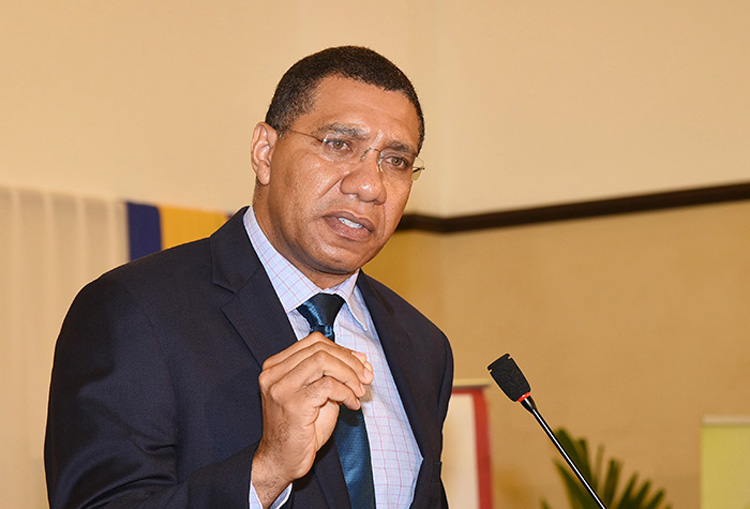Part 5: Drivers And Conductors – Inability To Attract And Retain Suitable and Qualified Drivers And Conductors.
In his budget presentation on Tuesday, march 8, 2022 Nigel Clarke Minister of Finance and the Public Service spoke of the “Inability To Attract And Retain Talent In The Public Sector. It is generally agreed that public sector compensation is not competitive. Public sector compensation, as currently constructed, hinders the Government’s ability to attract and retain talent in the public sector. Those who serve in the public sector do so mainly out of service to country and you will hear the comments from time to time that they are subsidizing government operations. In this regard, trade unions have been advocating for decades for better wages and conditions for public sector workers.”
The Public Transportation sector is also facing a similar dilemma, that of the Inability To Attract And Retain Suitable and Qualified Drivers And Conductors.
“I am focusing on eliminating indiscipline in the transport sector and restoring the railway system. The public transportation system is critical for productivity, and when workers utilise the vehicles they should enter work feeling motivated, and operators in the sector must accept the responsibility that is required from them. We are going to lift our standards in this country, treating people with respect, treating them like human beings, and when they end up at work they feel happy and end up being more productive. Commuters must be able to travel in comfort, and that work will be done to reposition the Jamaica Urban Transit Company (JUTC), as the public transport system is central for students and workers.”
Hon. Audley Shaw Minister of Transport and Mining

As far as NTAG is concerned, and the vast majority of investors in the sector agree, the quality of the available pool of talent from which the sector sources human resources for these roles is grossly inadequate and in need of immediate overhauling. Addressing longstanding issues of job security, working conditions, equity, uneven application of increases, and inadequate salaries is an immediate and urgent priority of NTAG.
One thing Drivers and Conductors in the Public Transportation Sector all have in common is that they all believe that they are not adequately or fairly compensated.
This is a problem.
A vast majority of the public will tell you that they are dissatisfied with the level of public transportation service they receive.
This is also a problem.
Both these problems are related and as a sector we have to address BOTH problems and that is what NTAG proposes to do as part of its vision 2030 plan.
Transport operators who ply sections of St Andrew West Rural withdrew their services on Monday, leaving students and commuters stranded in Half-Way Tree, Stony Hill and other areas. Poor road conditions, seized buses and a demand for fare increase have been cited among the reasons for the strike action.”
Currently drivers and conductors are considered to be independent contractors, as they can choose when, where and how often they work. However, in exchange, they have no job security, vacation pay or other benefits such as pension and health insurance for themselves and family members.
This must change!
NTAG proposes as part of its vision 2030 plan that all registered companies operating in the public transportation sector, as a part of their key strategy execution, must ensure that all independent contractors and operators working in their company have the option and opportunity for job security, vacation pay and other benefits such as pension and health insurance for themselves and family members. This includes payroll payments on a weekly or every two-week basis to allow for accumulated income allowing for better allocation of income for saving, investments, statutory payments and importantly a pay slip. A pay slip provides proof of consistent income allowing for loan applications and other financial requirements.
NTAG will play a major role in ensuring that standards of entry are maintained at a suitable level, and that appropriate training opportunies are always available.
A key feature of this is a project NTAG is working on to develop a cloud based National Transporter Database of Driver and Conductors.
Problem Definition: There is said to be over 200,000 Available Independent Drivers of Public Passenger And Commercial Vehicles who do not own their own vehicle, and will drive for Stakeholders – Investor, Owner And Operator.
However, there is no National Central Addressable And Available Database that can be accessed by these and other stakeholders to view suitable candidates for employment and engagement. In addition, there is no way to reliably determine the work history, experience and expertise of these drivers, and so engagement is often a hit and miss situation. The vast majority of these drivers are transient in that they are not stable in their employment and are known to frequently move around, driving for different investors, owners and operators.
Proposed Solution: The creation of a NTAG National Central Addressable And Available Database that can be accessed by these stakeholders to view suitable candidates for employment and engagement.
A Bulletin Board will also be incorporated allowing Investor, Owner And Operator to post available positions and for Available Independent Drivers to view and apply.
Stakeholders:
National Transporters Alliance Group: Owners and operators of the proposed National Central Addressable And Available Database and responsible for vetting and uploading Available Independent Drivers into the system.
Available Independent Drivers and Conductors: who will apply and have their relevant information uploaded to the database, and pay an annual fee to maintain listing. They will also be able to access and view ONLY their records and file in the database, ratings, comments and recommendations from Investor, Owner And Operator. Ratings and comments from other parties such as passengers and customers should also be available.
Investor, Owner And Operator: These individuals or companies own and operate a single vehicle or a fleet of vehicles, and are seeking to engage Available Independent Drivers. They will apply and have their relevant information uploaded to the database, and pay an annual fee to maintain their listing, and will be able to access and view ONLY their records and file in the database, ratings, comments and recommendations from Available Independent Driver and Conductors. They will NOT have access to another Investor, Owner And Operator information in the database.
They will be able to access and view all Available Independent Driver and Conductors with a limited view of the records and files in the database, ratings, comments and recommendations. Ratings and comments from other parties such as passengers and customers should also be available.
Available Independent Drivers should be able to view limited information on these stakeholders to determine for themselves the suitability of these individuals as employers.
Information and Data Capture: This can begin during the NTAG membership onboarding process as the same information will be required.
Next Part 6: The Ministry of Transport & The Transport Authority
Next Part 4: The Key Stakeholders Required To Make This Plan Work – Investors and Owners – To Achieve Vision 2030 For The Public Transportation Sector A New Business Model Is Needed Now…NTAG


 Businessuite Markets1 week ago
Businessuite Markets1 week ago
 Businessuite News242 weeks ago
Businessuite News242 weeks ago
 Businessuite Markets2 weeks ago
Businessuite Markets2 weeks ago
 Logistics & Transportation1 week ago
Logistics & Transportation1 week ago
 Businessuite Markets2 weeks ago
Businessuite Markets2 weeks ago
 Businessuite Markets2 weeks ago
Businessuite Markets2 weeks ago
 Businessuite News24 International3 weeks ago
Businessuite News24 International3 weeks ago
 Businessuite News242 weeks ago
Businessuite News242 weeks ago
























